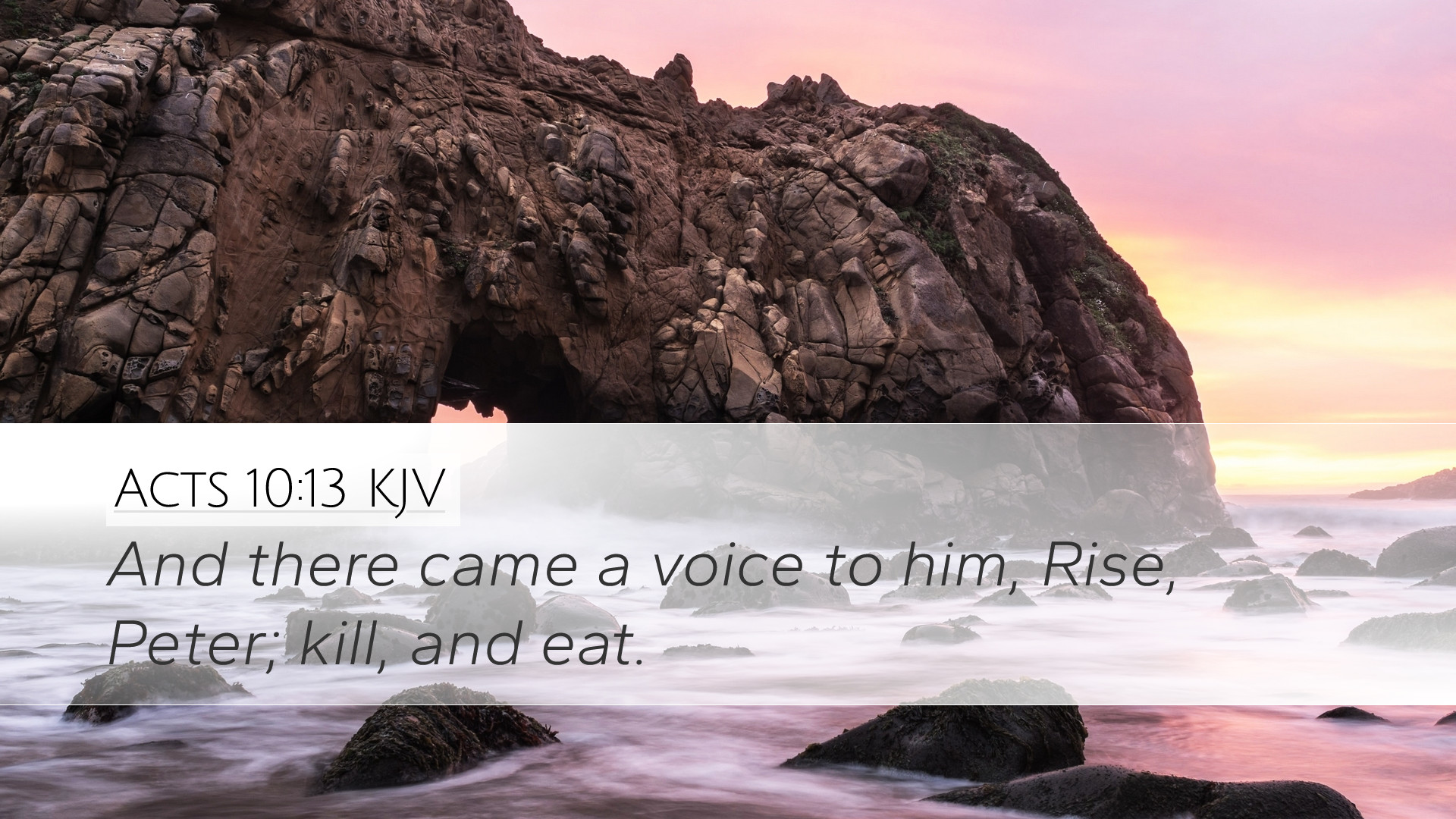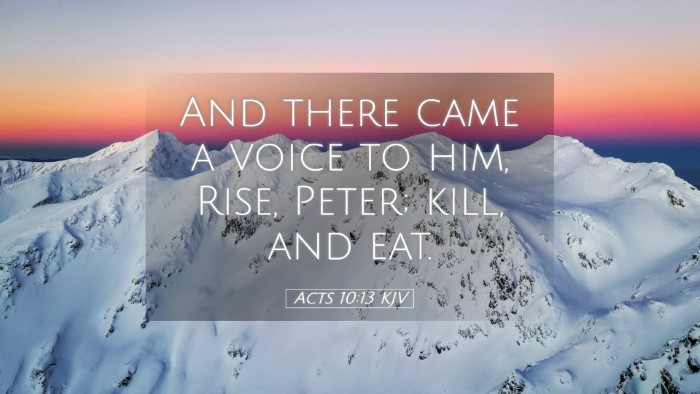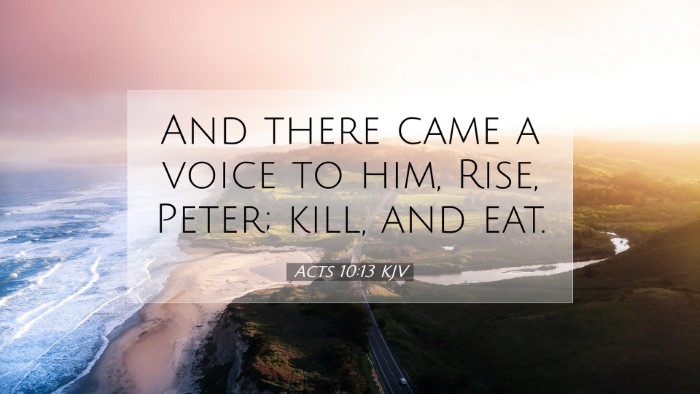Commentary on Acts 10:13
Acts 10:13 reads: "And there came a voice to him, Rise, Peter; kill, and eat." This verse is part of a larger narrative that details Peter's vision of a sheet descending from heaven containing various animals, which serves as a pivotal moment in the early Church, highlighting the themes of divine revelation and the expansion of the Gospel to the Gentiles.
Contextual Background
Understanding Acts 10:13 requires exploring the surrounding texts, notably verses 9-16, where Peter is on the rooftop praying and falls into a trance. The vision represents a critical turning point in Christian history, addressing the question of clean and unclean animals which becomes a metaphor for the inclusion of Gentiles in God’s plan of salvation.
Theological Implications of the Voice
The voice commanding Peter to "rise, kill, and eat" underscores several significant theological implications:
- Divine Authority: The command originates from God, indicating that His directives override traditional Jewish laws concerning dietary restrictions.
- Transformation of Jewish Law: This moment indicates a transformative shift in how the Jewish people are to perceive the Gentiles. The dietary laws, once a symbol of Jewish identity and separation, are no longer applicable to the followers of Christ.
- Inclusion of the Gentiles: God's message is clear; it invites and opens the door for Gentiles into the fellowship of believers, emphasizing the universality of the Gospel.
Commentary Insights
Matthew Henry's Commentary
Matthew Henry remarks that this vision serves as a clear instruction from God to prepare Peter for the incoming Gentile mission. He notes that the command to "kill and eat" not only represents dietary freedom but ultimately signifies the spiritual liberation of Gentiles, who prior to this moment were considered unclean. It highlights God's love and grace towards all humanity and the breaking down of barriers previously instituted through the Law.
Albert Barnes' Notes on the Bible
Albert Barnes expands on this notion by stating that God’s initiative in this encounter with Peter demonstrates His sovereign will in altering the understanding of cleanliness and uncleanliness. He indicates that the vision was preparatory for the encounter with Cornelius, a centurion and a Gentile, which follows in the narrative. This affirms the overarching theme of Acts that the salvation of Jesus Christ is not limited to the Jews but is available to all mankind.
Adam Clarke's Commentary
Adam Clarke provides a historical context regarding the Jewish dietary laws and their significance in maintaining national and religious identity. He posits that this vision explicitly rejects the restrictive interpretation of these laws, thereby liberating both Peter and, symbolically, the Church from the shackles of legalism. Clarke also emphasizes that the phrase “kill and eat” is not merely about dietary choices but symbolizes embracing and accepting those who were once viewed as outsiders.
Practical Applications
This verse offers several practical applications for pastors, students, and scholars:
- Embracing Diversity: Just as Peter was called to rise, kill, and eat, we are called to embrace diverse backgrounds and cultures within our congregations. The work of the Church today necessitates a break from prejudices based on race, nationality, or past traditions.
- Listening for God's Voice: The importance of discerning God’s voice as Peter did is imperative for spiritual leaders today. It is crucial for leaders to understand the shifts in God’s mission work and be attentive to His guidance.
- Preparation for Mission Work: Just as the vision prepared Peter for the upcoming meeting with Cornelius, modern believers should seek God's preparation in their mission efforts, recognizing that God’s outreach often extends beyond their expectations.
Conclusion
Acts 10:13 serves as a watershed moment in the book of Acts, encapsulating the movement from a Jewish-centric faith to one that embraces all nations. The interplay of divine instruction and human action challenges both historical and contemporary believers to re-examine their attitudes toward inclusivity and outreach. Through the perspectives of noted commentators, we gain deeper insight into the significance of this verse, solidifying its relevance for the Church today.


